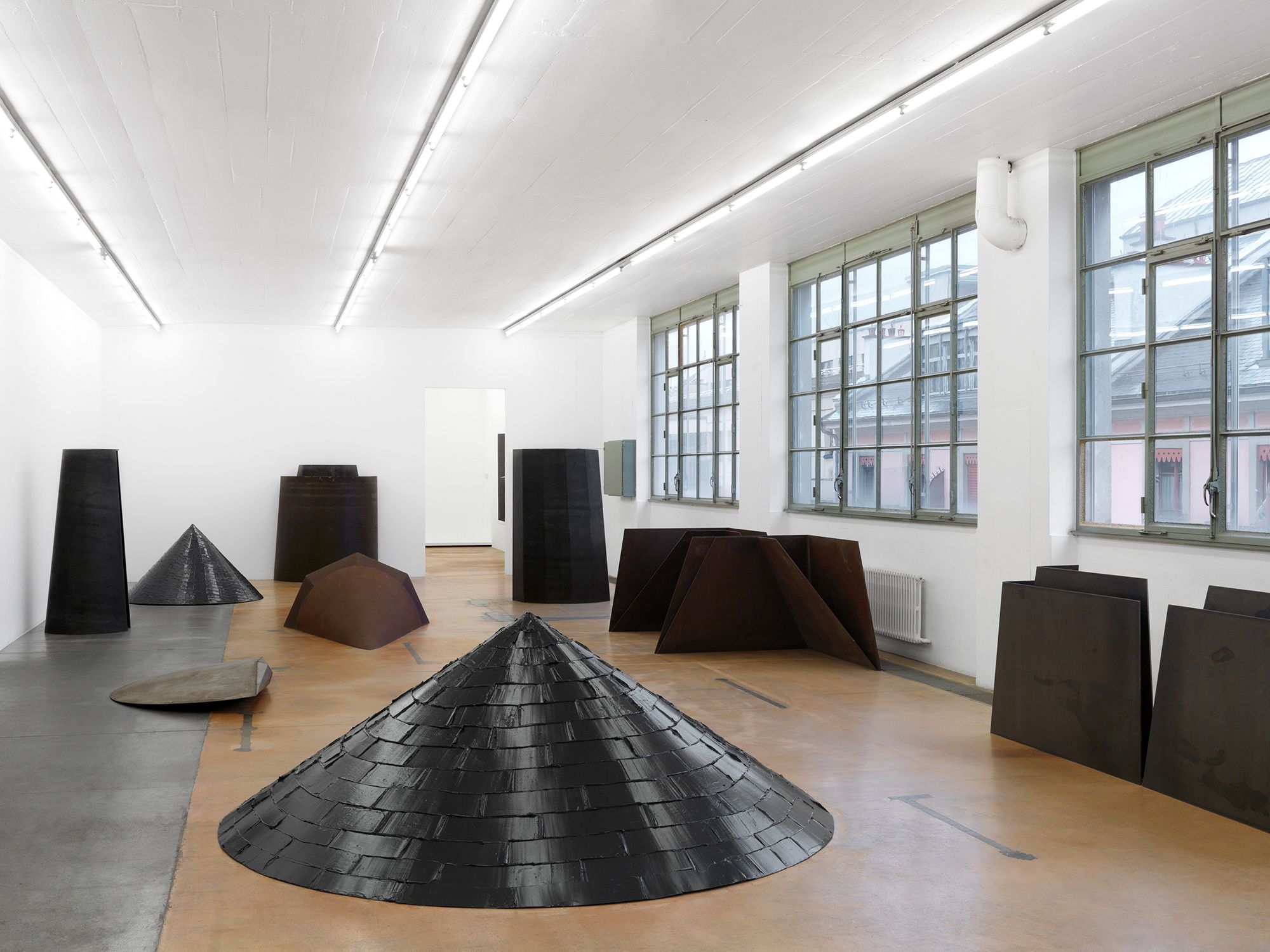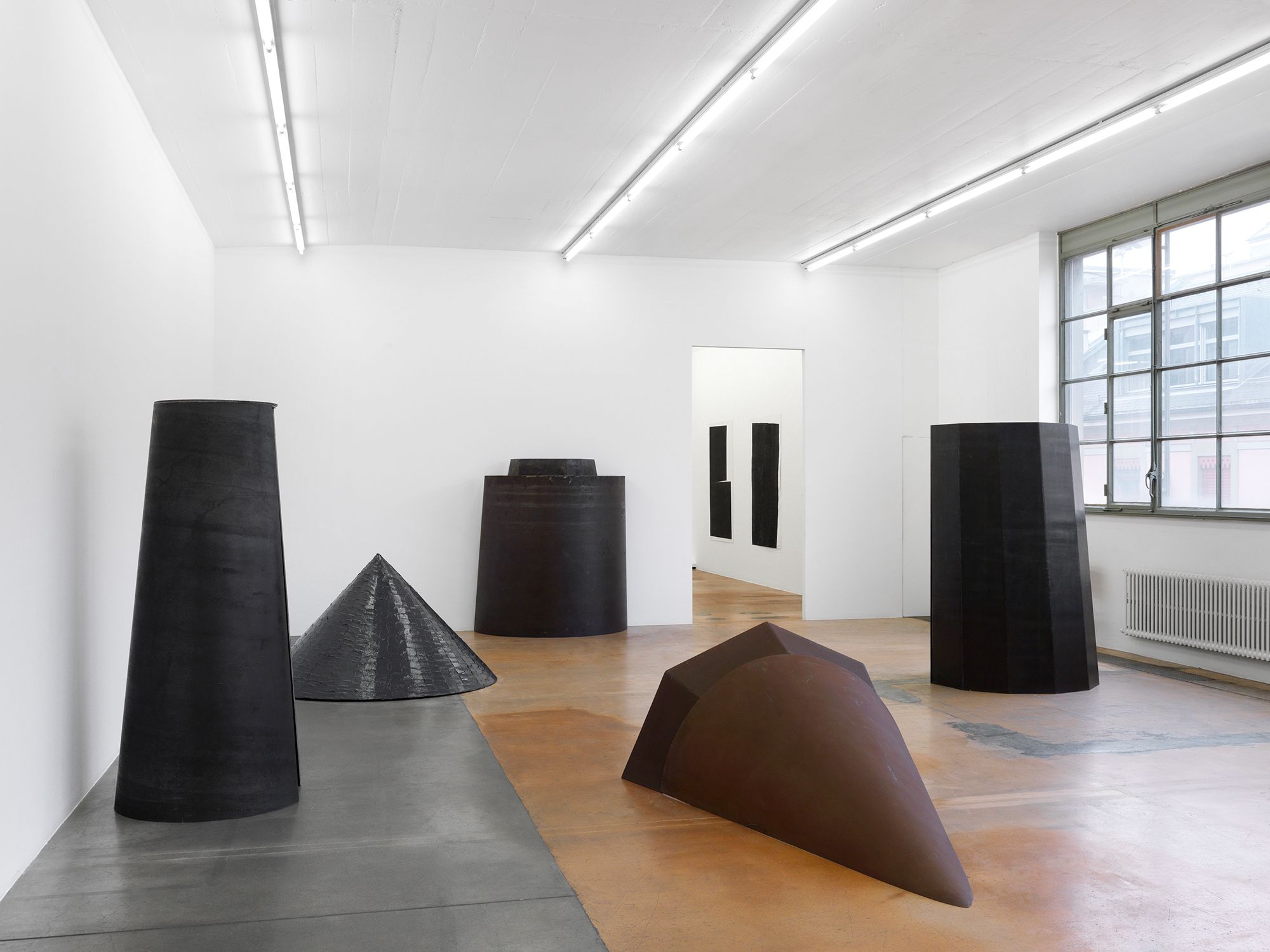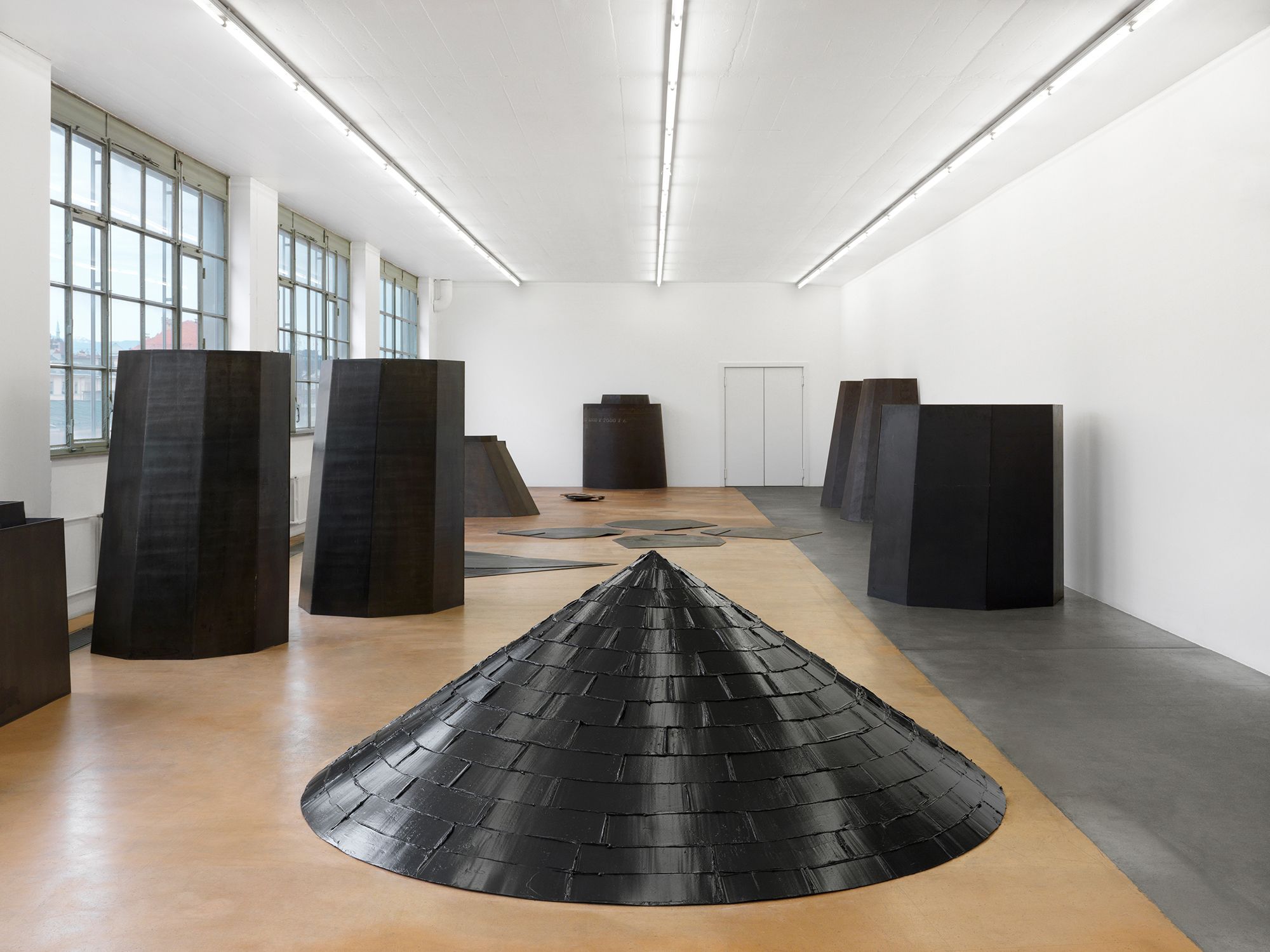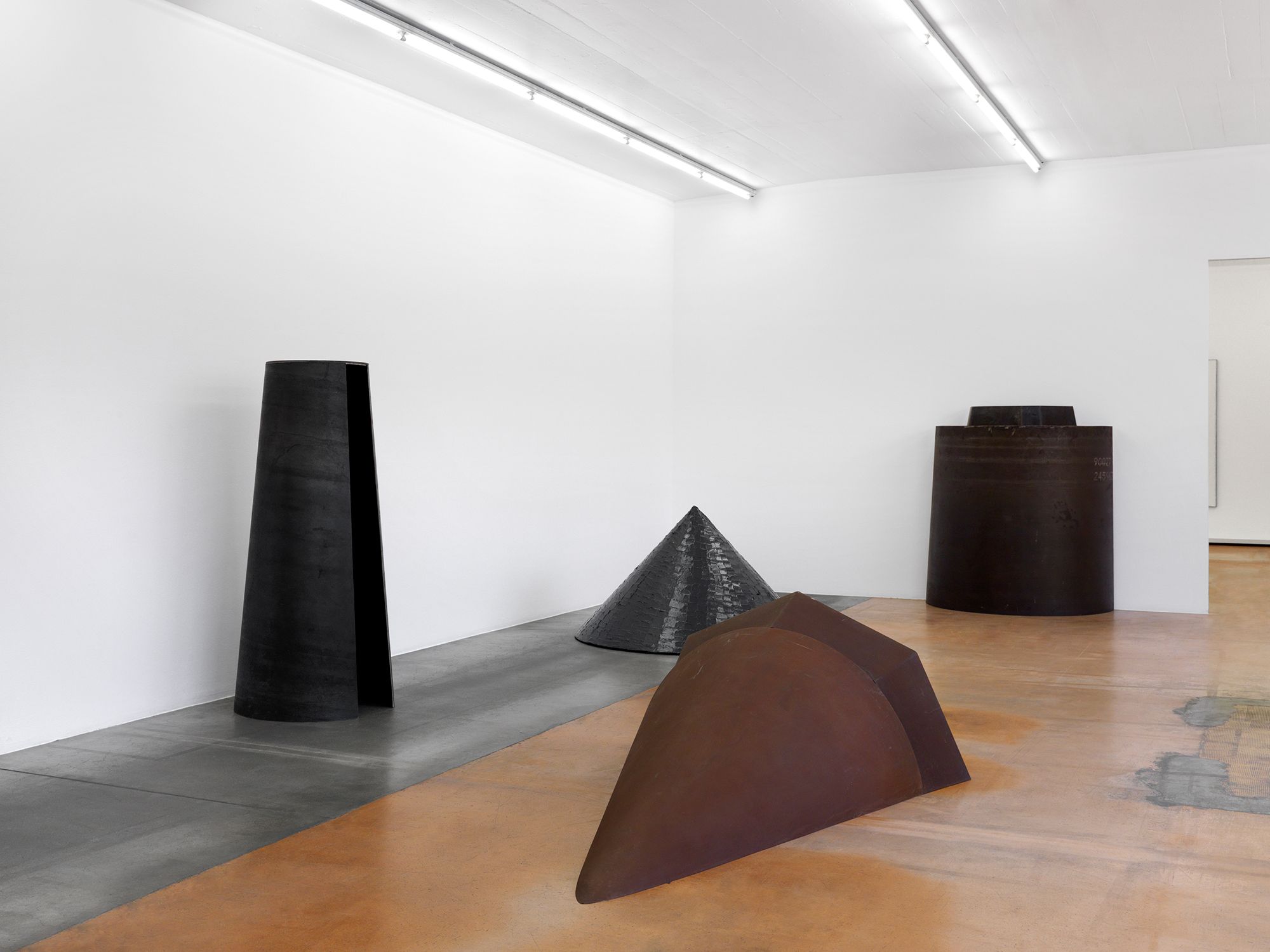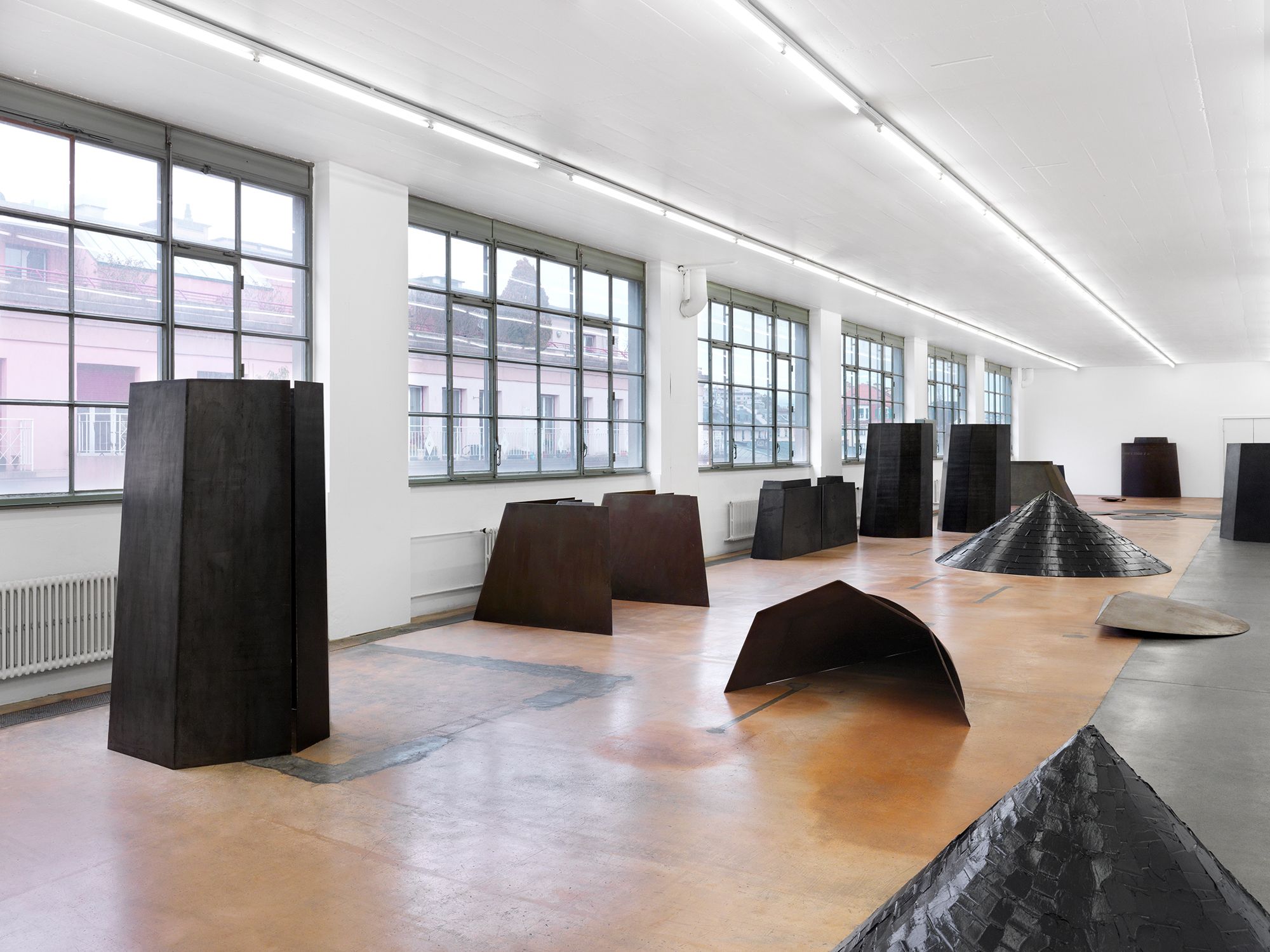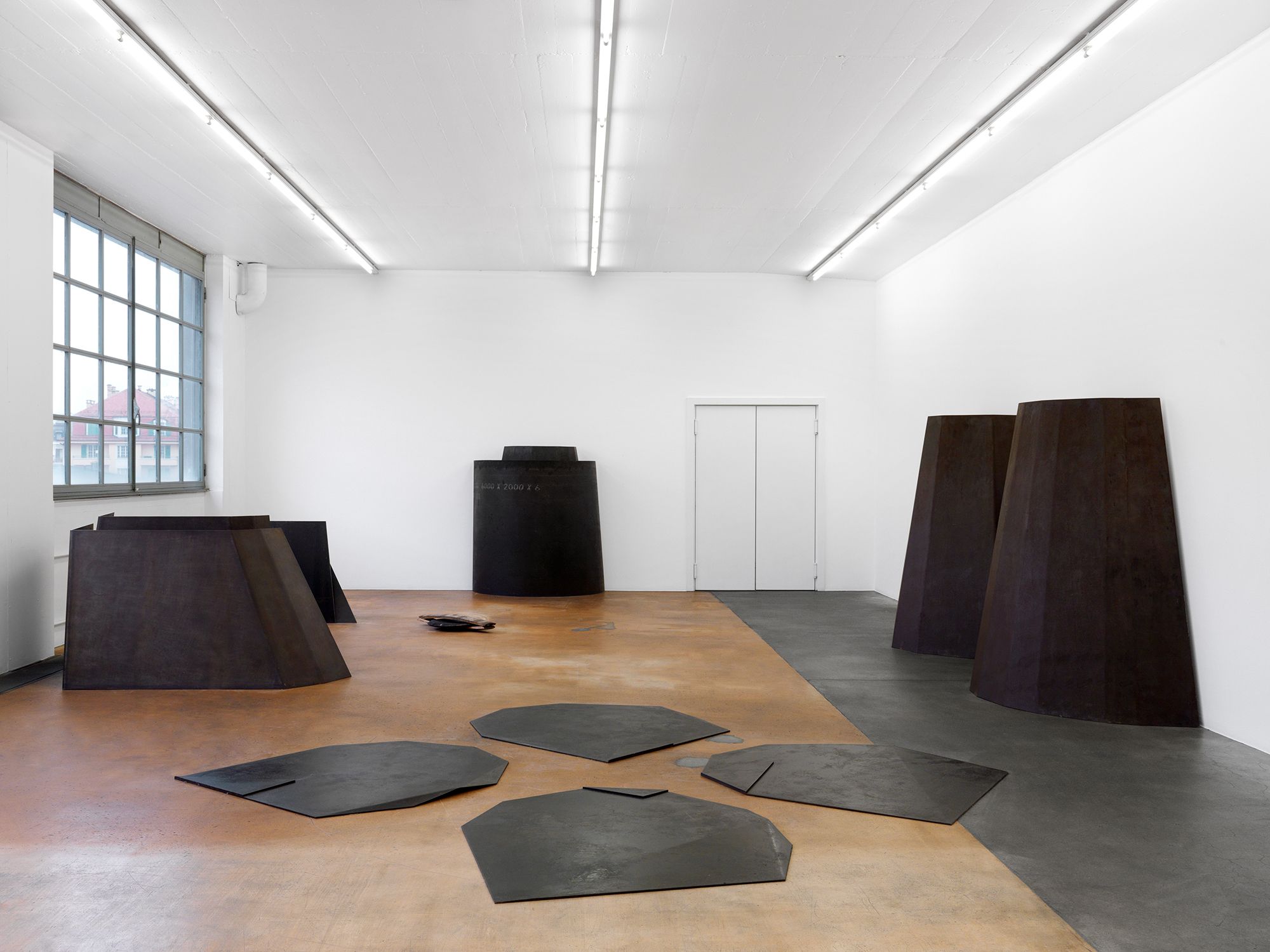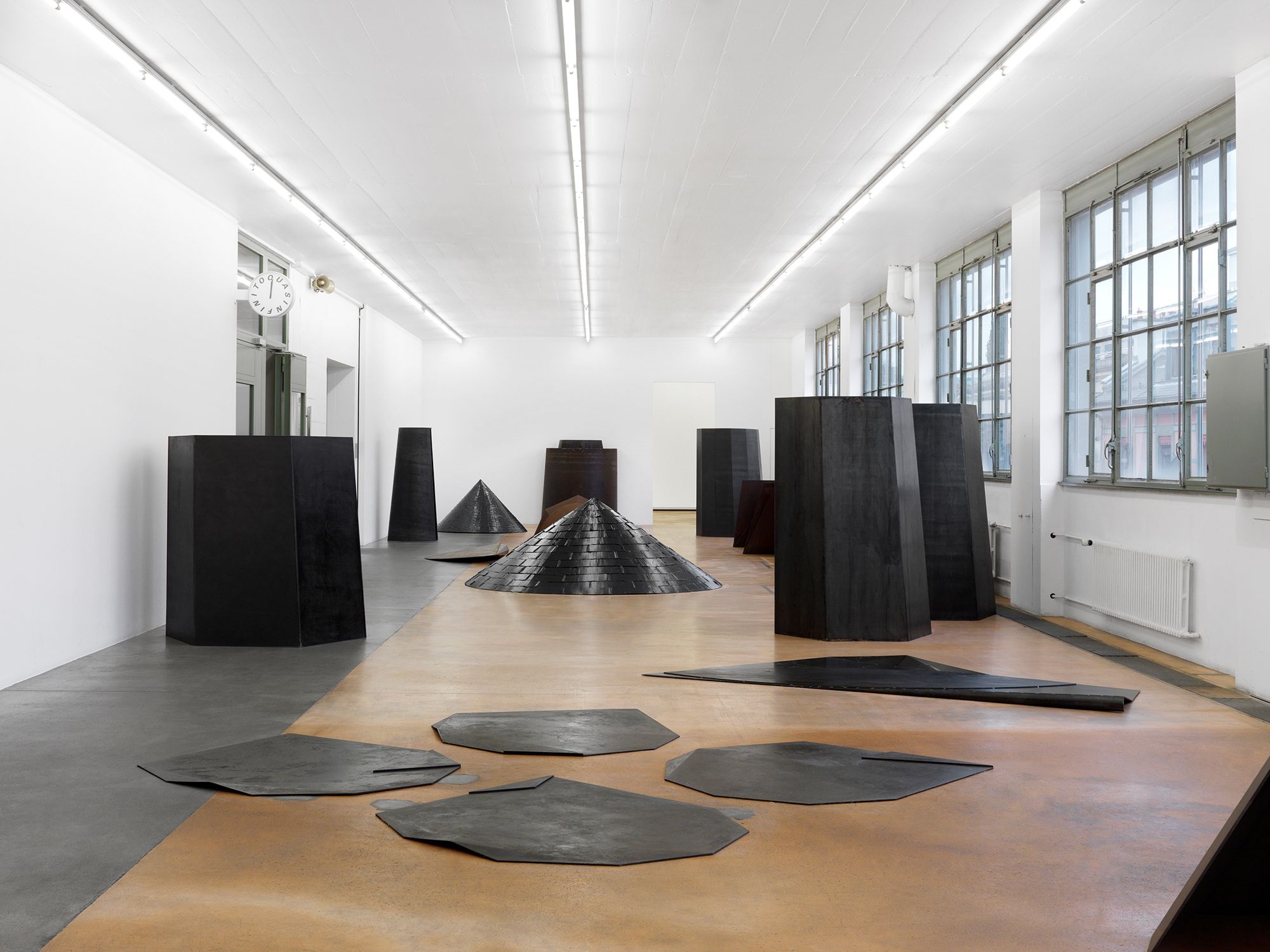Royden Rabinowitch (b. 1943, Toronto) is a main figure from the renewal of post-Minimalist sculpture. His work, based on the explicit distinction made by Henri Poincaré between the abstract (geometrical and continuous) space and that of the ordinary experience (discontinuous and localized), questions the notion of space. He works in series, giving priority to mechanically bent steel plates, and to wooden sculptures whose elements are doubly curved like barrels. Interested in the “anthropomorphic bodies” of David Smith, Rabinowitch also discovered, at the beginning of the 1960s, works by Donald Judd and Anthony Caro. Whereas to him, Judd and Caro respectively positioned their sculptures in relation to architecture and landscape, Rabinowitch created sculptures that enter into dialogue with the space of the body.
1st Address to “Le Nez” (C): Central Order of Things and Events — 1st Judgement on the Basis of Abstract Thinking (1962) is made up of a truncated cone partially closed inside from which is hung a weight—an object chosen for its metaphorical potential which also refers to the lengthening of the nose. The work is thought as a series of operations; coiling of the cone, then hanging of the weight. It belongs to an ensemble of five works all referring to Alberto Giacometti’s œuvre and to two sculptures by Boccioni: Development of a Bottle in Space and Unique Forms of Continuity in Space.
Grease Cone (1965) results from a series of operations: the coiling of the cone and the greasing of the surface which, as it cannot be spread evenly, makes the cone asymmetrical. The grease applied on the metal hides the underlying material and modifies the aspect of the sculpture.
Karakorum (1968–1971), name of the city founded by Genghis Khan to unify the vanquished tribes, aims at summing up his previous works in one construction. The artist proceeds to a synthesis through folding and stratification of previous forms, which herald the Handed Manifold (starting in 1972), a series of flat sculptures visible from multiple locations.
Although Royden Rabinowitch’s complex process alienates him from the preoccupations of contemporary Minimalist artists, the materials used and the strippeddown geometrical forms confer his œuvre a place within the emblematic experimentations of the 1960s–1970s.
The works presented here, on loan at MAMCO since its opening, were donated to the museum in 2016 by the collector who had gathered them.
- Exhibition organized around the Royden Rabinowitch Donation
